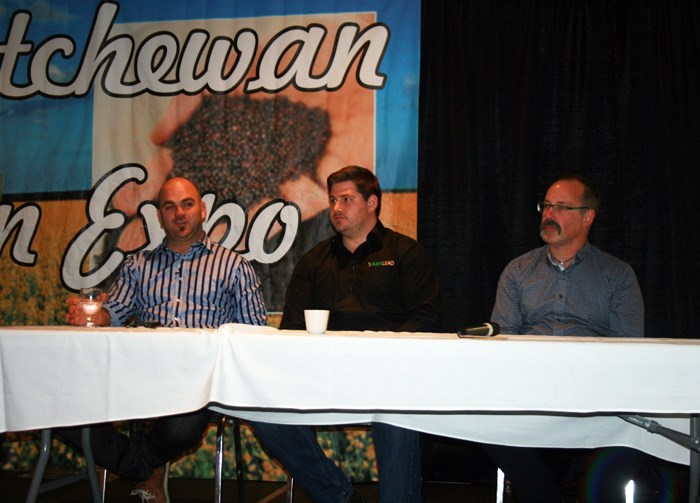The conditions of agriculture are always something of a roller coaster but what do those in the industry see in the near future?
Several questions looking at to the future of the industry were put to a panel at the Sask Grains Expo last Wednesday as part of their Grain Millers Harvest Showdown in Yorkton last week to find out what their views were; starting with whether there was a future for the family farm.
“Who and when did this ‘person’ set the size of a family farm?” responded producer Kristjan Hebert. He noted in the United States there are farms with 50-70,000 acres still owned by a family.
“My definition of a family farm is a business that excels,” he continued.
To excel means growing, said Kristjan.
“Inflation is three per cent, so if you don’t do something to get bigger you’re going to die,” he said.
Brennan Turner, president, Farmlead.com said “everybody has different expectations of a family farm.”
But one thing is a constant, making sure you are getting paid for your efforts on the farm. He said his grandfather always said it was a must “to pay yourself first,” and that remains important today.
That said, Turner said farm size changes the role of the farm owner.
“Once you go big it becomes much more of a managerial position,” he said.
Stuart Smyth, Assistant Professor & Research Chair in Agri-Food Innovations, University of Saskatchewan said larger farms do require “increased management skills,” and a willingness to accept new technologies, whether family-owned, or not.
In terms of new tech Smyth said the next big wave on the farm will be in the area of digital technologies.
“Agriculture is probably the last economy in North America to be hit by digital tech,” he said.
Whether a family farm, or not, climate change is a factor producers may have to deal with in the longer term
Smyth said that may not be a disaster on the Canadian Prairies. It is likely to see the area more akin to the northern mid-west in the U.S., which would mean conditions more favourable for corn and soybeans, two crops already expanding into the region.
As an example Smyth said on a trip from Carlyle to Stoughton “and never lost sight of a corn field in that 30-miles.”
Hebert said “any new crop, or technology is exciting,” adding farmers are good at adapting to such changes.
One thing that will be needed is a reliance on the science that comes before change, and Smyth said that trust is not what it once was among consumers.
“We’re seeing a whole push back against science in agriculture,” he said.
Turner said “it’s early incredible” how “misconstrued the perception is of what’s done on the farm.”
Smyth said farmers have to be more proactive in getting their side of the story on food production out to consumers, adding that means becoming “involved in social media.” As it stands now “the message they (consumers) get to hear is from the opponents.
“Farmers themselves have to get involved in the story.”



